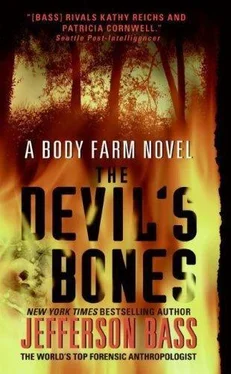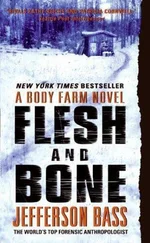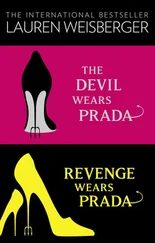Jefferson Bass - The Devil's Bones
Здесь есть возможность читать онлайн «Jefferson Bass - The Devil's Bones» весь текст электронной книги совершенно бесплатно (целиком полную версию без сокращений). В некоторых случаях можно слушать аудио, скачать через торрент в формате fb2 и присутствует краткое содержание. Год выпуска: 2009, Жанр: Детектив, на английском языке. Описание произведения, (предисловие) а так же отзывы посетителей доступны на портале библиотеки ЛибКат.
- Название:The Devil's Bones
- Автор:
- Жанр:
- Год:2009
- ISBN:нет данных
- Рейтинг книги:4 / 5. Голосов: 1
-
Избранное:Добавить в избранное
- Отзывы:
-
Ваша оценка:
- 80
- 1
- 2
- 3
- 4
- 5
The Devil's Bones: краткое содержание, описание и аннотация
Предлагаем к чтению аннотацию, описание, краткое содержание или предисловие (зависит от того, что написал сам автор книги «The Devil's Bones»). Если вы не нашли необходимую информацию о книге — напишите в комментариях, мы постараемся отыскать её.
The Devil's Bones — читать онлайн бесплатно полную книгу (весь текст) целиком
Ниже представлен текст книги, разбитый по страницам. Система сохранения места последней прочитанной страницы, позволяет с удобством читать онлайн бесплатно книгу «The Devil's Bones», без необходимости каждый раз заново искать на чём Вы остановились. Поставьте закладку, и сможете в любой момент перейти на страницу, на которой закончили чтение.
Интервал:
Закладка:
“What do you think? Look familiar?”
“Sure thing,” she said. “That’s Billy Bob What’s-His-Name, well-known frontal sinus-about-town.”
“I just thought maybe since you’ve been spending so much time with those cranial fragments, some of those curves would register with you.”
“I’m trying to match fracture lines,” she said, “so I haven’t really been worrying about the sinus itself. Besides,” she added,
“I’m still missing a lot of the upper edge. I doubt that we’ve got enough yet for a match or an exclusion.”
She held out the postage-stamp-size mosaic, then plucked a second scrap of bone from the sandbox and aligned an edge with the bigger piece. The edges fit fairly well but not perfectly, and I knew that Miranda had spent days gauging such minutiae.
She flipped the pieces over so we could see where the inner layer of bone had peeled away, revealing the sinus cavity. Along one portion of each piece that she held, I saw a faint line where the sinus cavity ended.
“We’ve got some edge line here and here”-she pointed-“but there’s not much, and it’s not particularly distinctive. You want to flip the X-ray over, since we’re looking from the back side?”
I flipped it, and she shifted and rotated the pieces of bone above the X-ray, seeking some elusive alignment.
“Hard to say.” I frowned.
“Very hard,” she agreed. “How reliable did you say frontal-sinus comparison is?”
“Very,” I said. “No two are the same.”
“You’re sure?”
“I think I’m sure.”
“Who’s researched it?”
“Doug Ubelaker, up at the Smithsonian, did an article on this about ten years ago. He concluded it was a good basis for identification or exclusion.”
“How many sinuses did he look at? And how’d he quantify the match?”
“He looked at a few dozen,” I said. “I don’t know that he quantified it on any numerical scale. I think he drew on his experience and judgment to determine whether or not things matched.”
“Hmm,” she said. “Sounds like the way they compared fingerprints about a hundred years ago.”
“You got a better idea?” I was feeling a little defensive, though I wasn’t sure why.
“No,” she said, but then, after a pause, “Well, maybe. I mean, the edge of the sinus traces a curving line, right?”
“Right.”
“So if you can define those curves mathematically-the curve shown in Parnell’s X-ray here and the curve of Humpty Dumpty here, once we get him back together again-you should be able to graph how closely those equations match.”
I was having trouble following her, but she seemed to be warming to the idea.
“Actually,” she said, “that might be a pretty nifty dissertation topic. I’m in the market, since you just erased my proposal.”
“I did not,” I said. “Besides, I have a draft of your proposal. You’re going to refine age estimates using the pubic symphysis.”
“I thought I was,” she said. “But the more I think about it, the less excited I get. The idea of squinting at four or five hundred pubic bones for a year seems like a very tedious project.”
“Gee, not like squinting at graphs and statistics for a year,” I said.
“But it would be original graphs and statistics,” she said.
“The pubic symphysis has already been studied up one side and down the other, so anything I did would be so derivative. This could be new territory. It could help us with exactly the problem we’ve got right here: Is this Freddie Parnell’s burned skull or isn’t it? We don’t have the mathematical tools to measure that right now. My experience and my judgment-that’s what I’m supposed to rely on, in the absence of statistical tools, right? — my experience and my judgment say this ain’t Freddie.” Her voice was rising, and I heard her frustration rising, too.
“But my experience and my judgment also say we don’t have near enough of this damn puzzle done yet to say that with any damn confidence.”
With that, she laid the two pieces of bone in the sand, stood up, and walked out of the bone lab.
As the door banged shut behind her, I realized that she’d been pushed-by me, by eight days of squinting at skull fragments, and by her terrifying assault-to the breaking point.
I also realized she was right about the frontal sinus. It would indeed be a good dissertation topic. And this particular scrap of reconstructed sinus wasn’t nearly enough to tell us whether Garland Hamilton was safely dead or dangerously alive.
CHAPTER 31
EVER SINCE BURT DEVRIESS HAD FILED HIS CLASS-ACTIONlawsuit against Trinity Crematorium in Georgia, he’d been sending me a steady stream of cremains to analyze. I’d also been making frequent trips to Alcoa with my postage scale to weigh the cremains from Helen Taylor’s furnaces.
By now I was nearing thirty cases from Trinity, and they showed interesting similarities and fascinating differences. One consistent trend was the weight of the cremains: Those from Georgia tended to weigh three or four pounds, which was less than two-thirds the weight of those from Tennessee.
The cremains from Georgia usually contained a mixture of human bone and animal bone, as well as a bewildering array of extraneous contaminants: bits of charred wood, zippers, nails and screws, and heaping helpings of Quikrete concrete mix, which accounted for the powder, the sand, and the pebbles. Most puzzling of all, the Georgia cremains contained small, fluffy spheres of fabric-I took to calling them “fuzzballs”-whose only purpose, as best I could tell, was to puff up the cremains and keep them from looking so skimpy.
Early in Burt’s suit, I’d gone to Chattanooga to give a deposition. I was cross-examined by a legion of lawyers, representing not just Trinity but a consortium of funeral homes that were being sued by DeVriess for defrauding their customers. The lawyers made several scornful attempts to show that it was impossible to tell the difference between burned human bone and burned animal bone. I’d brought numerous slides, though, and the questioning gave me a chance to present a lecture on the distinctive differences between human bone and animal bone.
One thing working in my favor was the fact that the fragments of actual bone that came back from Georgia hadn’t been as finely ground as the cremated bones that came out of Helen Taylor’s processor. Either Trinity didn’t have a processor or, like the cremation furnace, it sat untouched and gathering dust. Trinity did, however, have a wood chipper parked behind one of the sheds-and right beside a commercial-size barbecue smoker. The two pieces of equipment, operating separately or in tandem, conjured up images that boggled the mind-and turned the stomach.
Burt had waged an aggressive campaign to keep the case before the media, and it had worked. More and more clients signed on, and the magnitude of his damages claim kept multiplying. Within three weeks, thirty plaintiffs had joined the class, and Burt was seeking a million dollars for each plaintiff. If every remaining wronged family signed on, it was possible the claim could grow to $900 million.
One scorching afternoon during the dog days of August, the UPS man brought me a flat cardboard envelope instead of the cremation containers I’d come to expect from him. Tucked into the cardboard was an envelope embossed with the name of Burt’s firm, and tucked inside the envelope was a check for fifty thousand dollars-drawn not on the firm’s account but on Burt’s personal one. I dialed his office and got Chloe.
“Hi, Chloe. Is the champion of the underdog in at the moment?”
“I’m not sure about the champion of the underdog,” she said,
Читать дальшеИнтервал:
Закладка:
Похожие книги на «The Devil's Bones»
Представляем Вашему вниманию похожие книги на «The Devil's Bones» списком для выбора. Мы отобрали схожую по названию и смыслу литературу в надежде предоставить читателям больше вариантов отыскать новые, интересные, ещё непрочитанные произведения.
Обсуждение, отзывы о книге «The Devil's Bones» и просто собственные мнения читателей. Оставьте ваши комментарии, напишите, что Вы думаете о произведении, его смысле или главных героях. Укажите что конкретно понравилось, а что нет, и почему Вы так считаете.












